A mere seventy-five miles off the coast of Puerto Plata in the Dominican Republic, Humpback Whales can be found by the thousands. The Silver Bank is a very special region of the Southwest North Atlantic Ocean. It is a shallow underwater carbonate platform, that just nearly reaches the surface of the ocean in several areas. The northern region of the Silver Bank houses countless coral heads that breach the surface of the ocean, especially at low tide. As a result of overfishing and unethical practices in the area, these coral heads hold only memories of life and bygone ecosystems.
Upon arriving in the Silver Bank, you are instantly transported into another world, a magical world. The waters turn a shade of bright turquoise blue, the wild ocean wind whispers in your ear as the smell of sea salt settles the final touch upon your senses. All this just to make it the more unbelievable that anywhere and everywhere you look on the horizon, you can see Humpback whales breaching the surface as they play.
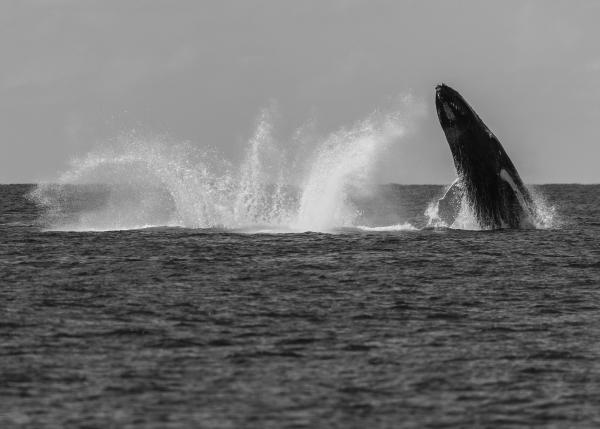
After a good breakfast each morning, we loaded onto the skip boat and searched for whales on the horizons. Eight hours of searching each day provided many opportunities to find these large creatures roaming about the ocean.
Our very first dive into the water was one to remember, we jumped right into the middle of a rowdy group, and we were quickly surrounded by six whales! The host of the show was a female and her escort; tagging along were four challengers. No matter what direction you looked you were sure to see these magical creatures right in front of you. They hung around for a few minutes, and then elegantly swam off into another area of the ocean. After this thrilling first encounter, we were eager to jump back into the boat and find some more whales to swim with.

The second day had a lot more surface action than underwater action. We had peck slaps happening every which way, multiple tail strikes, and lots of breaching. A peck slap is when a whale lifts its entire pectoral fin out of the water, and then brings it crashing down with a huge splash. The working theory is that Humpbacks do this as a way of showing off in order to attract potential mates. The size of the splash is supposed to be impressive, and it announces to the underwater world how big and sexy this whale is. Tail strikes on the other hand can be a bit different. While we think Humpbacks use tail strikes to attract a mate, it is also believed that tail strikes are used to warn off predators and other males.
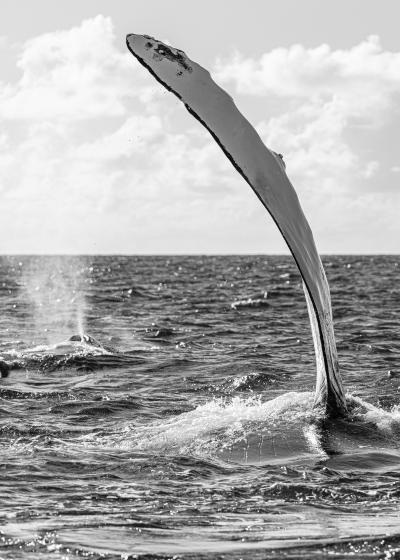
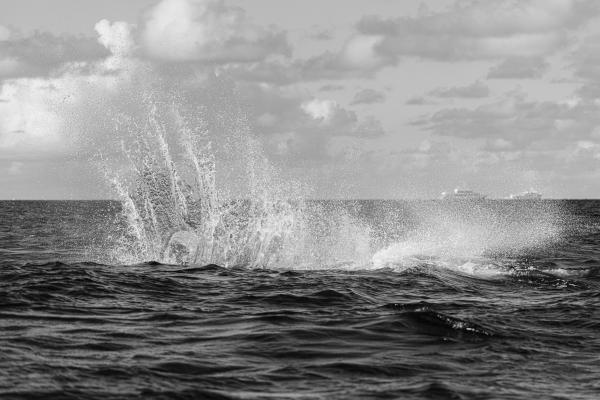
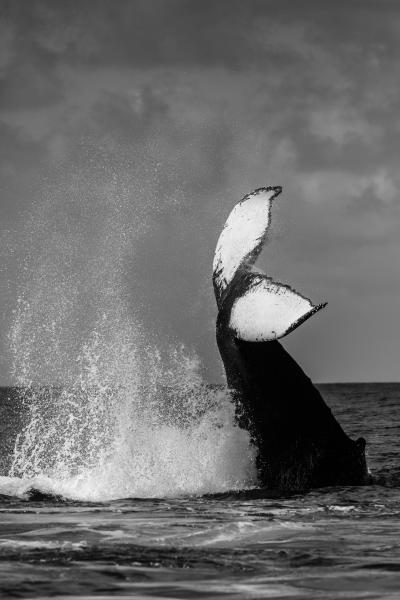
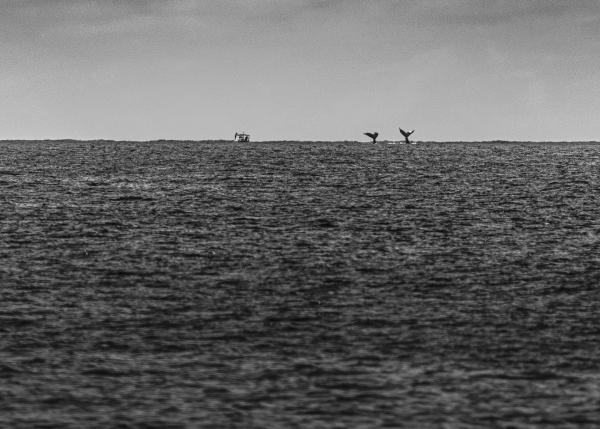

Breaching is when a whale jumps almost completely out of the water, just to come crashing back down onto the surface of the ocean. We don’t completely understand why Humpbacks do this, but we theorize that it is a social behavior that males do when competing for females. Outside of mating rituals, it could also be a means of long-distance communication seeing as sound waves travel both faster and farther under water. Or, this could simply be a way of scratching an annoying itch that a flipper just can’t reach. We witnessed countless breaches over our seven day stay on the Silver Bank. On the fourth day we were out on the skip, a calf breached nearly 20 times right next to our boat. Right when we thought it was done, the mother made a massive breach, and nearly left the water completely. We got quite the show!
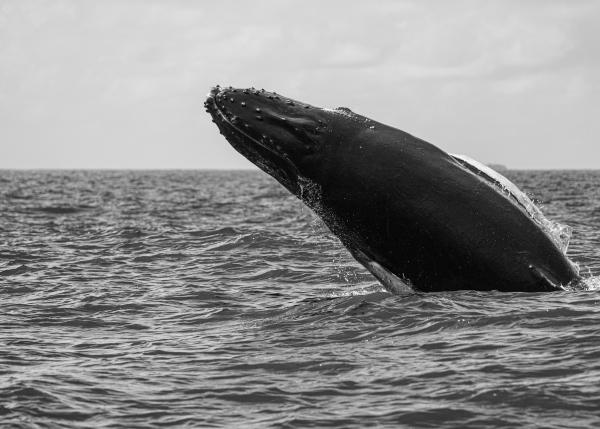
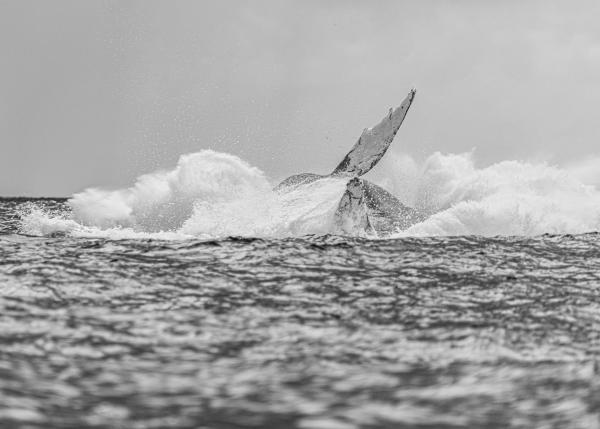
In addition to all of these on the surface flirting techniques, Humpbacks will also swim down a bit, float vertically and sing to each other. The reason these whales float vertically, is so that the song travels a greater distance. If you manage to find a singing whale and jump into the water with it, you not only hear the song, but you can feel the power of the song vibrate in your bones. We managed to find two singing whales on the Silver Bank, and we swam with the second singer for about fifteen minutes. The experience of swimming in the open ocean and being serenaded by whale song is unlike anything else you can experience out here, a poetic and beautiful song for the senses.
Rowdy groups, formed when a challenger whale intrudes upon a female and an escort, can be observed all along the Silver Bank. The challenger or challengers will compete and potentially even fight one another to become the new escort. Whales will typically batter each other with their chins, which are laced with barnacles, while attempting to drown the other by preventing them from reaching the surface to breath. Battle scars can be seen all along the males’ backs.
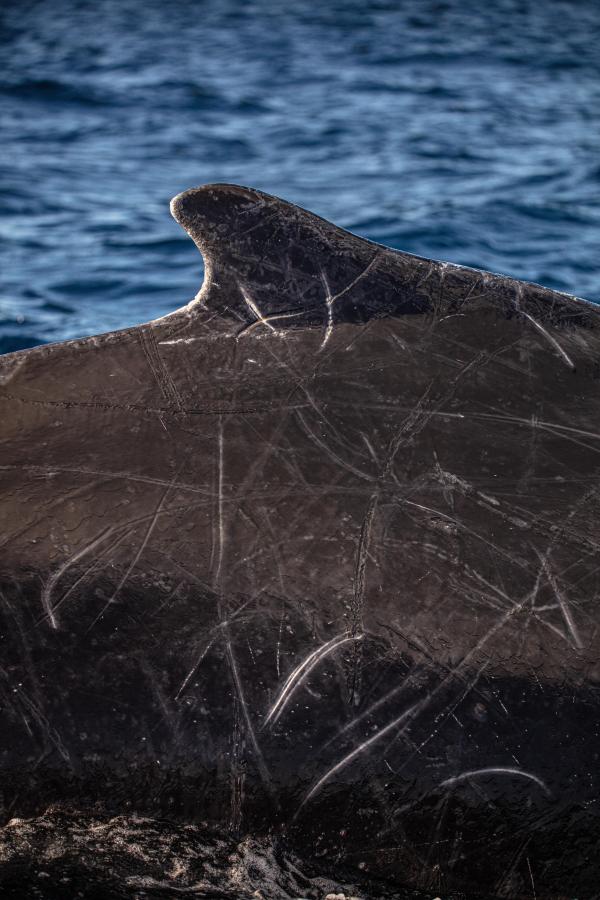
Last but not least, we observed and swam with several mother and calf duos. Mating is the reason these whales swim all the way down to the Silver Bank after all! Humpback Whales spend several months on the bank without a food source. Once the calf is ready, the duo will migrate all the way back up into the Northern Atlantic Ocean to resume their steady diet of Krill and small crustaceans.

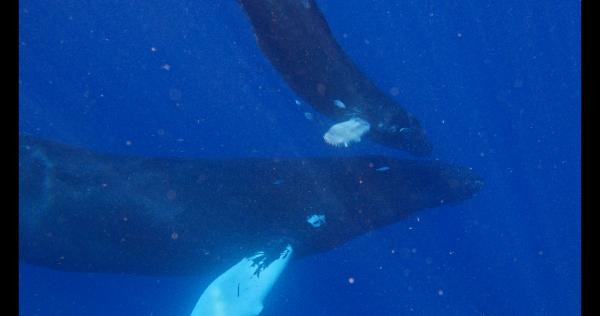

Jennifer, Mike, and myself really enjoyed our time on the Silver Bank, and we highly recommend the crew at Conscious Breath Adventures if anyone is interested in swimming with the Humpback Whales!
Thank you for taking the time and sharing this adventure with us.






